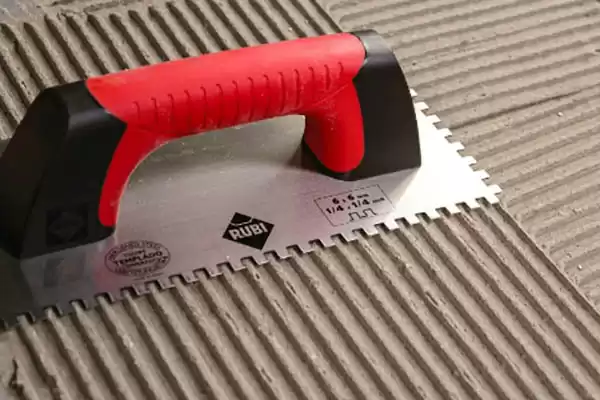When it comes to laying tiles, installing flooring, or applying adhesives, the trowel is one of the most essential tools in a tradesperson’s toolkit. However, not all trowels are created equal, and one feature that stands out is the trowel notch. But what exactly is the purpose of the trowel notch, and why is it so important in construction and renovation work? Let’s dive into the specifics of this simple yet crucial tool feature.
1. Ensuring Even Adhesive Distribution
The primary purpose of a trowel notch is to ensure that adhesive, mortar, or other materials are evenly distributed over a surface. Trowels typically have notched edges that create ridges in the adhesive when it is spread across a surface. These ridges serve a critical function by ensuring that the adhesive is applied uniformly, preventing air pockets, and ensuring a secure bond between the tile or flooring and the substrate.
Different notched trowels are designed for various materials and sizes of tiles. For example, smaller notches are typically used for smaller tiles or lighter materials, while larger notches are suitable for heavier tiles or flooring that require more adhesive. The size and shape of the notch directly affect the thickness of the adhesive layer, which in turn affects the durability and stability of the installation.
2. Enhancing Bond Strength
By using a trowel with the correct notch size, installers can enhance the bond strength between the substrate and the material being installed. The notches allow the adhesive to spread out and make better contact with both surfaces. As the material is pressed down into place, the ridges of adhesive collapse, filling in any gaps and creating a solid, continuous bond.
This method is particularly important for large format tiles or natural stone, where full coverage of adhesive is necessary to prevent tiles from cracking or coming loose. The notches help ensure that there is no void under the tiles, which could compromise the integrity of the installation over time.
3. Facilitating Better Adhesive Coverage
The design of the trowel notch also plays a key role in ensuring optimal adhesive coverage. By creating evenly spaced ridges, the notched trowel helps maintain consistent coverage across the entire surface area. This consistency is crucial for preventing weak spots that could lead to future issues such as tile lifting, cracking, or water penetration.
Additionally, notched trowels allow for the correct amount of adhesive to be used, reducing waste and ensuring a cleaner, more efficient installation process. This is particularly beneficial when working with expensive adhesives or when installing large areas of tile or flooring.
4. Tailoring to Specific Installation Needs
Not all installations are the same, and this is where different types of trowel notches come into play. There are various shapes and sizes of notches available, each designed for specific applications:
- Square Notches: Square notched trowels are often used for ceramic tiles and are ideal for most standard tile installations. They create a uniform layer of adhesive that supports the tile effectively.
- V-Notches: V-notched trowels are typically used for spreading adhesives on wall tiles or backsplashes where a thinner layer of adhesive is needed. They are perfect for small tiles or when a lesser amount of adhesive is sufficient.
- U-Notches: U-notched trowels are similar to square-notched trowels but provide a slightly different adhesive pattern. They are often used for larger tiles or when a medium layer of adhesive is required for stability.
Choosing the right notch type and size is crucial for ensuring the adhesive performs as expected, providing a secure, lasting installation.
5. Simplifying the Installation Process
The notched trowel not only improves the quality of the installation but also simplifies the process. By ensuring even adhesive spread and optimal coverage, the installer can work more quickly and efficiently. This reduces the amount of time spent adjusting tiles or reapplying adhesive, leading to faster project completion and lower labor costs.
Conclusion
In conclusion, the trowel notch is a fundamental feature that significantly impacts the quality and durability of tile and flooring installations. It ensures even adhesive distribution, enhances bond strength, facilitates better coverage, and caters to specific installation needs. By understanding the purpose and benefits of trowel notches, installers can choose the right tool for the job, ensuring a successful and long-lasting result. Whether you’re a professional tradesperson or a DIY enthusiast, the right notched trowel can make all the difference in achieving a perfect finish.
Post time: 9月-03-2024







